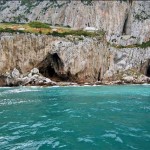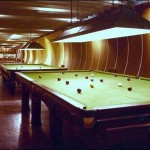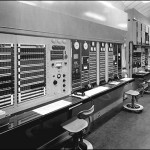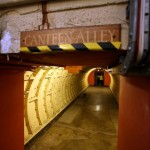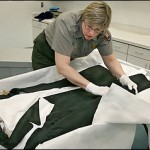 The Brooks Brothers (!) coat Abraham Lincoln was wearing the night of his assassination is part of Ford’s Theater permanent collection.
The Brooks Brothers (!) coat Abraham Lincoln was wearing the night of his assassination is part of Ford’s Theater permanent collection.
Until last year when Ford’s closed for renovations, the coat had been on exhibit since the museum acquired it in 1968, but now that reopening approaches, some conservators are concerned that the coat can’t take being on public display much longer.
Light and gravity can doom historic clothing, they say. And the Brooks Brothers coat, like other Lincoln garments, had been on almost continuous display from the time they were acquired in 1968 until Ford’s was closed for renovation last year, officials said.
“It might be that it’s time to put these things away and not to exhibit them to the public if there’s any hope of saving them for future generations,” said Cathy Heffner, president of Textile Preservation Associates, who said she examined the clothes for the National Park Service last month.
The concern illustrates an ongoing debate over the display of national treasures: the desire to preserve items for posterity vs. the right of citizens to experience them.
It’s a tough question. Light damages textiles irreparably. There is no way to restore them once the UV rays have done their thing. UV blocking technology can help delay the inevitable, but it’s not a long-term solution.
Meanwhile, people want to see these kinds of deeply personal artifacts of iconic figures. How much closer can you get to the great man himself than to see his blood on his coat?
